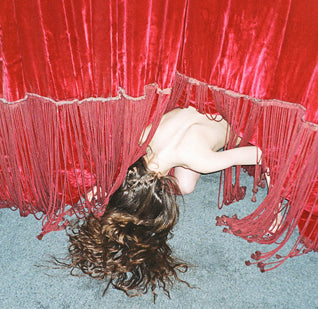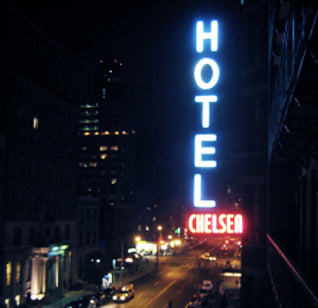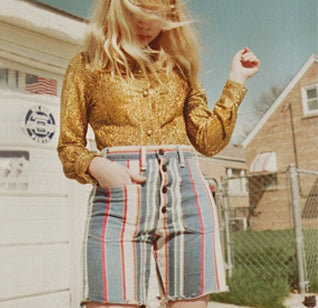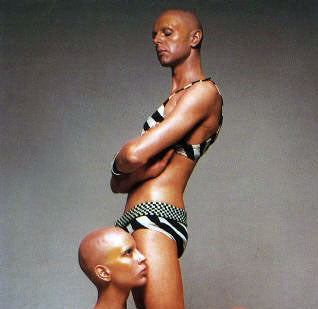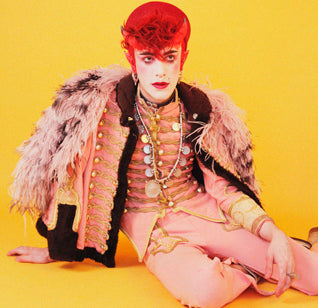FLIRTING WITH WEALTH
Milly Thompson asks, how closely related are seduction and success?
by Maria Raposo
Art has become the ultimate emblem of arrival, an impressive collection being considered as important as mansions, yachts and fast cars. Artists’ work features in lifestyle magazines alongside fashion, food and travel, reinforcing the link between wealth, success and beauty.
Where, though, does this leave the female artist; to what extent is sex appeal a prerequisite for her success? Milly Thompson flirts with the art market - in her work, seduction is both the subject and the end result. By exploring desire and its relationship to aspiration and achievement, she asks what it takes to succeed as a woman in the 21st century.
For nearly fifteen years Milly Thompson was a member of BANK, a group notorious in the 1990s for confrontational exhibitions with titles such as ‘Cocaine Orgasm’ and ‘Sewage Lust’. Her first solo exhibition was in 2008 at Peer, a gallery in Hoxton.

'Dumb, Hard: Small Blue', 2009
After collaborating for so long, her solo exhibition was so diverse it seemed like a mixed show. So how did she find her own voice and adjust to being alone in the studio? "I felt very lonely and lost", recalls Thompson. "The thought of letting people see stuff that I was the author of was very difficult for me. I yearn for collaboration where shared responsibility means invisibility… to a certain extent." Five years on, she is still going it alone. The work remains diverse, but the territory it explores is far clearer.
Although we are suffering an economic downturn the art market is thriving: the wealthy have morphed into collectors and art ranks among the world’s most desirable commodities.
Instead of defying the market, as BANK did in the 1990s, Thompson flirts with it, exploring what fuels this hunger for acquisition. Lifestyle magazines, such as ‘W’ and ‘10’, that feature art alongside supermodels and designer labels, form part of the answer. Thompson’s ‘Dumb hard’ series (2009) uses pages from ‘W’ magazine, which are mounted on aluminium to create an in-your-face wall of seduction. At the Focal Point Gallery, these pieces formed the backdrop to ‘Anxiety Knots’(2009), intestinal sculptures clad in colorful materials. Oozing from each sculpture are nasty substances reminiscent of snot, vomit and excrement – a reminder that even the most beautiful - or most airbrushed - bodies have repulsive aspects.
"There’s something slutty about making paintings because they are the easiest ‘sell’... by far a cheap shot."
When beautiful bodies are utilized to sell commodities, sexy women offer something more potent than products – desire – the motor that drives our consumer society. They make women want to be like them and men want to have a similarly perfect body by their side. The message is clear: the more desirable you are, the greater your chances of getting what you want. This virtuous circle should make us happy, except there’s a downside; desire nurtures feelings of inadequacy that gnaw at one’s intestines, producing the titular ‘Anxiety Knots’.
The series ‘Desert Siren’ (2013) melds art and appearance further. Supported by a frame of stretcher parts, Grecian-style goddesses display perfect breasts nestling inside draperies made of polyester. The breasts are artificial, the fibers man-made: one can’t rely on nature for perfection and, in any case, these sirens are paradoxical constructs. The stretchers link them to painting, but the cloth is dress fabric rather than canvas. Like models, they display the merchandise but, as artworks, they are the merchandise. They’ve been shopping, of course: each is flanked by a collection of carrier bags declaring allegiance to fashion houses such as Gucci, Ralph Lauren and Prada.
Paintings sell better than sculptures: "There’s something slutty about making paintings", Thompson tells me, "because they are the easiest ‘sell’ by far… a cheap shot." The series ‘Pleasure Paintings’ (2010-13) pays ironic tribute to Francis Picabia, the maverick one-time Dadaist who insisted that he painted to sell and turned his back on the avant-garde to paint nudes based on glamour photos from ‘girlie’ magazines.

'Reading' (Avant l'Homme series), 2011
‘L’Oiseau Bleu (Picabia)’(2010), a faithful copy of Picabia’s 1935 painting of a woman with a bird, goat and cow, is juxtaposed with a painting of Angelina Jolie and two of her children: both pictures reminiscent of Gauguin. Picabia’s sentimental view of women as beings at one with nature is paired with a more complex idyll. Jolie may occupy the opposite end of the social spectrum from the Polynesian women who posed for Gauguin, yet one could argue that, as a celebrity, she is equally exotic, distant and unreachable. Turning her into an earth mother merely adds another layer to the identity fabricated by the media for our consumption.
As well as having everything any woman could want, Jolie also collects art; the ‘perfect’ woman is also the target audience. Artists are increasingly becoming celebrities in their own right. But as a female artist is it enough to produce the merchandise or, like the ‘Desert Sirens’, do you have to be the goods as well?
In unravelling the relationship between desire, aspiration and achievement, Milly Thompson addresses the complex issue of what it means to succeed as both a woman and a female artist today.
www.millythompson.co.uk












